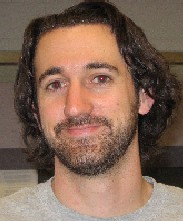
Shawn Kuhn
Instructor - Adj
M.S. Student
731 Rieveschl
Baldwin Hall
CEAS - Civil & Arch Eng & Const Mgmt - 0071
Professional Summary
Microbial Ecology, Contamination, Bioremediation
Advisor: Dr. Shann
Research and Practice Interests
Soil contamination from anthropogenic sources is an immediate and apparent problem both domestically and internationally. In the United States alone, there are over 1300 Superfund sites, of which 70% present a risk of exposure through soil contamination. Current regulations require that contaminated soil be cleaned up to background levels prior to reuse or resale. This is both costly and ecologically devastating. Most now believe that total cleanup is unnecessary, and that only bioaccessible contamination needs to be remediated. Unfortunately, bioaccessible soil contamination is not readily determined chemically, as extractable levels need to be verified by sensitive biotic responses. Microbial communities live within the matrix of contaminated soil and are likely the first responders to bioaccessible contamination. Therefore, the microbial community response can be a rapid and accurate biological marker for accessible contamination. Here we use phospholipid fatty acid (PLFA) analysis to track the change in abundance and diversity of microbial communities following a spike of organic or heavy metal contamination. Specifically, we will investigate if and when the community returns to pre-contamination levels and whether diagnostic PLFA profiles are discernable. In this way, we hope to use PLFAs as a sensitive bioindicator of accessible contamination. As the number of industrialized countries increases and industry and technology produce more potential for exposure to harmful substances, an accurate assessment tool is paramount in the simultaneous pursuit to preserve human health.